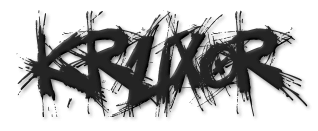justify-items
Quick Summary for justify-items
justify-items property defines the default justify-self for all items of the box, giving them all a default way of justifying each box along the appropriate axis.
Code Usage for justify-items
/* Basic keywords */ justify-items: normal; justify-items: stretch; /* Positional alignment */ justify-items: center; /* Pack items around the center */ justify-items: start; /* Pack items from the start */ justify-items: end; /* Pack items from the end */ justify-items: flex-start; /* Equivalent to 'start'. Note that justify-items is ignored in Flexbox layouts. */ justify-items: flex-end; /* Equivalent to 'end'. Note that justify-items is ignored in Flexbox layouts. */ justify-items: self-start; justify-items: self-end; justify-items: left; /* Pack items from the left */ justify-items: right; /* Pack items from the right */ /* Baseline alignment */ justify-items: baseline; justify-items: first baseline; justify-items: last baseline; /* Overflow alignment (for positional alignment only) */ justify-items: safe center; justify-items: unsafe center; /* Legacy alignment */ justify-items: legacy right; justify-items: legacy left; justify-items: legacy center; /* Global values */ justify-items: inherit; justify-items: initial; justify-items: revert; justify-items: unset; More Details for justify-items
justify-items
The CSS justify-items property defines the default justify-self for all items of the box, giving them all a default way of justifying each box along the appropriate axis.
The effect of this property is dependent of the layout mode we are in:
In block-level layouts, it aligns the items inside their containing block on the inline axis. For absolutely-positioned elements, it aligns the items inside their containing block on the inline axis, accounting for the offset values of top, left, bottom, and right. In table cell layouts, this property is ignored (more about alignment in block, absolute positioned and table layout) In flexbox layouts, this property is ignored (more about alignment in Flexbox) In grid layouts, it aligns the items inside their grid areas on the inline axis (more about alignment in grid layouts)Syntax
/* Basic keywords */ justify-items: normal; justify-items: stretch; /* Positional alignment */ justify-items: center; /* Pack items around the center */ justify-items: start; /* Pack items from the start */ justify-items: end; /* Pack items from the end */ justify-items: flex-start; /* Equivalent to 'start'. Note that justify-items is ignored in Flexbox layouts. */ justify-items: flex-end; /* Equivalent to 'end'. Note that justify-items is ignored in Flexbox layouts. */ justify-items: self-start; justify-items: self-end; justify-items: left; /* Pack items from the left */ justify-items: right; /* Pack items from the right */ /* Baseline alignment */ justify-items: baseline; justify-items: first baseline; justify-items: last baseline; /* Overflow alignment (for positional alignment only) */ justify-items: safe center; justify-items: unsafe center; /* Legacy alignment */ justify-items: legacy right; justify-items: legacy left; justify-items: legacy center; /* Global values */ justify-items: inherit; justify-items: initial; justify-items: revert; justify-items: unset; This property can take one of four different forms:
Basic keywords: one of the keyword valuesnormal or stretch. Baseline alignment: the baseline keyword, plus optionally one of first or last. Positional alignment: one of: center, start, end, flex-start, flex-end, self-start, self-end, left, or right. Plus optionally safe or unsafe. Legacy alignment: the legacy keyword, followed by one of left or right. Values
normal The effect of this keyword is dependent of the layout mode we are in:
In block-level layouts, the keyword is a synonym ofstart. In absolutely-positioned layouts, the keyword behaved like start on replaced absolutely-positioned boxes, and as stretch on all other absolutely-positioned boxes. In table cell layouts, this keyword has no meaning as this property is ignored. In flexbox layouts, this keyword has no meaning as this property is ignored. In grid layouts, this keyword leads to a behavior similar to the one of stretch, except for boxes with an aspect ratio or an intrinsic sizes where it behaves like start. start The item is packed flush to each other toward the start edge of the alignment container in the appropriate axis.
end The item is packed flush to each other toward the end edge of the alignment container in the appropriate axis.
flex-start For items that are not children of a flex container, this value is treated like start.
flex-end For items that are not children of a flex container, this value is treated like end.
self-start The item is packed flush to the edge of the alignment container of the start side of the item, in the appropriate axis.
self-end The item is packed flush to the edge of the alignment container of the end side of the item, in the appropriate axis.
center The items are packed flush to each other toward the center of the of the alignment container.
left The items are packed flush to each other toward the left edge of the alignment container. If the property's axis is not parallel with the inline axis, this value behaves like start.
right The items are packed flush to each other toward the right edge of the alignment container in the appropriate axis. If the property's axis is not parallel with the inline axis, this value behaves like start.
baseline, first baseline, last baseline Specifies participation in first- or last-baseline alignment: aligns the alignment baseline of the box's first or last baseline set with the corresponding baseline in the shared first or last baseline set of all the boxes in its baseline-sharing group. The fallback alignment for first baseline is start, the one for last baseline is end.
stretch If the combined size of the items is less than the size of the alignment container, any auto-sized items have their size increased equally (not proportionally), while still respecting the constraints imposed by max-height/max-width (or equivalent functionality), so that the combined size exactly fills the alignment container.
safe If the size of the item overflows the alignment container, the item is instead aligned as if the alignment mode were start.
unsafe Regardless of the relative sizes of the item and alignment container, the given alignment value is honored.
legacy Makes the value inherited by the box descendants. Note that if a descendant has a justify-self: auto value, the legacy keyword is not considered by the descend, only the left, right, or center value associated to it.
Formal definition
| Initial value | legacy |
|---|---|
| Applies to | all elements |
| Inherited | no |
| Computed value | as specified |
| Animation type | discrete |
Formal syntax
normal | stretch | <baseline-position> | <overflow-position>? [ <self-position> | left | right ] | legacy | legacy && [ left | right | center ]where
<baseline-position> = [ first | last ]? baseline<overflow-position> = unsafe | safe<self-position> = center | start | end | self-start | self-end | flex-start | flex-end
Examples
Simple demonstration
In the following example we have a simple 2 x 2 grid layout. Initially the grid container is given a justify-items value of stretch (the default), which causes the grid items to stretch across the entire width of their cells.
If you hover or tab onto the grid container however, it is given a justify-items value of center, which causes the grid items to span only as wide as their content width, and align in the center of their cells.
<article class="container" tabindex="0"> <span>First child</span> <span>Second child</span> <span>Third child</span> <span>Fourth child</span> </article> html { font-family: helvetica, arial, sans-serif; letter-spacing: 1px; } article { background-color: red; display: grid; grid-template-columns: 1fr 1fr; grid-auto-rows: 40px; grid-gap: 10px; width: 300px; justify-items: stretch; } article:hover, article:focus { justify-items: center; } article span { background-color: black; color: white; margin: 1px; text-align: center; } article, span { padding: 10px; border-radius: 7px; } article { margin: 20px; } Specifications
| Specification |
|---|
| CSS Box Alignment Module Level 3 # justify-items-property |
See also
CSS Grid Guide: Box alignment in CSS Grid layouts CSS Box Alignment Theplace-items shorthand property The justify-self property The align-items property Last modified: Feb 4, 2022, by MDN contributors
Select your preferred language English (US)Français日本語Русский中文 (简体) Change language
